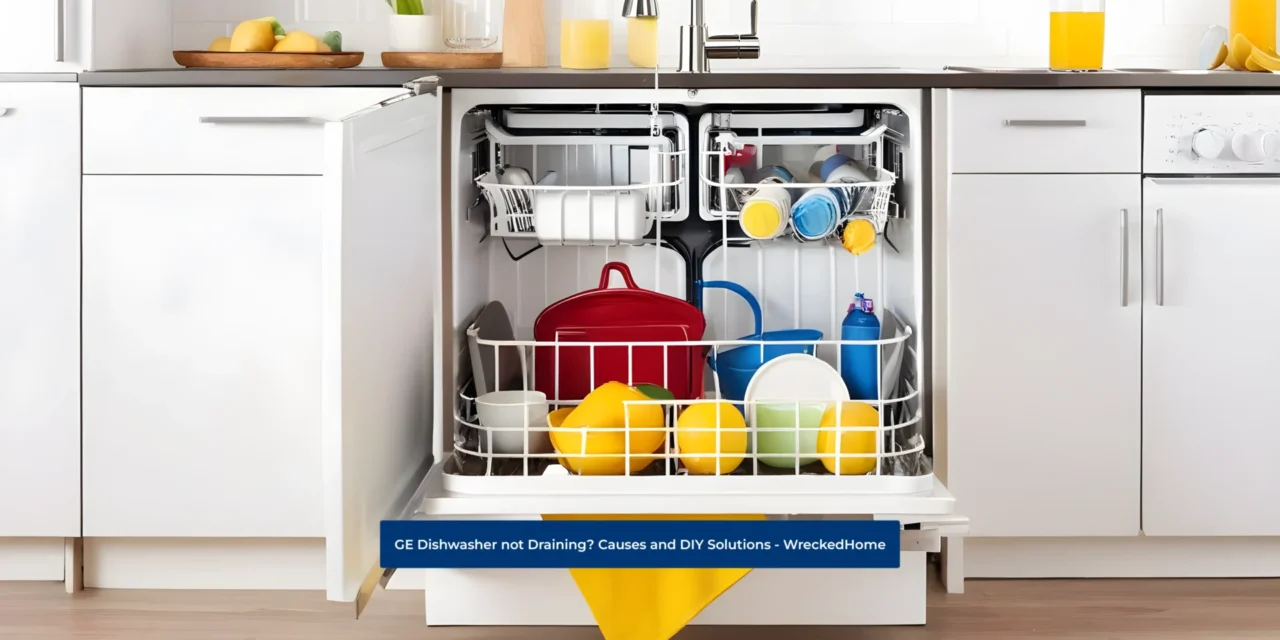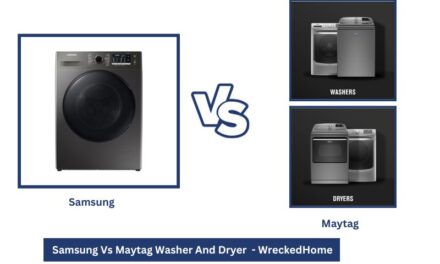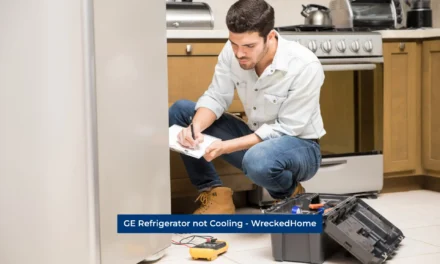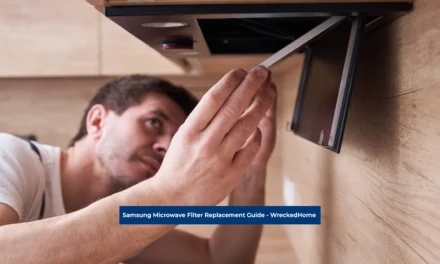Is your GE dishwasher not draining or doing its best to be efficient? Are you wondering about the possible causes and DIY solutions for this issue? If yes, then don’t worry. We are 100% behind you. Appliances today serve as the workhorses of many homes. Therefore, we depend on them. When everything works fine, they ensure convenience and a peace of mind. GE dishwashers are no exception to relative wear and tear.
If you own a GE dishwasher, you should know the tips and tricks to troubleshoot minor draining issues. You should also be informed on when to repair or replace your appliance.
So, let us dive into the details of what to do if you find your GE dishwasher not draining after the wash cycle. We will begin by diagnosing the possible causes. Let’s get into this guide for a GE dishwasher not draining.
Causes of your GE Dishwasher not Draining
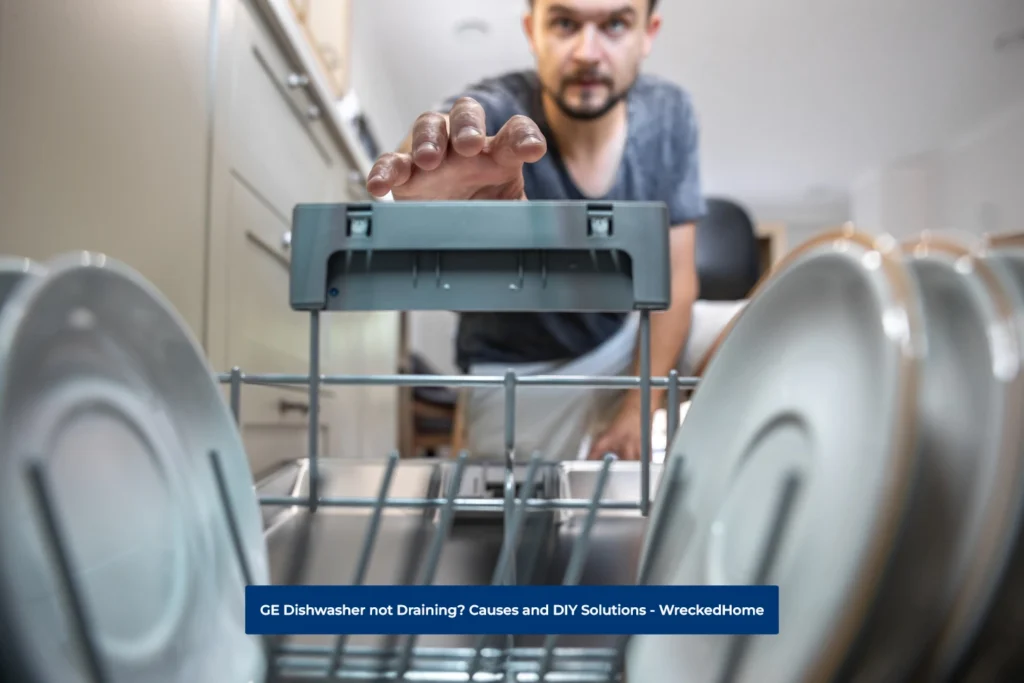
Kinked or Blocked Drain Hose (GE Dishwasher not draining)
A dishwasher’s drain hose technically connects the dishwasher to the sink drain, flushing the wastewater as the wash cycle completes. But, if you see that the water is not flowing anywhere, it could probably be a sign of a kinked or clogged hose. Food particles or debris sometimes can build up in the drain hose, impairing functionality and ultimately resulting in more expensive repairs. You should promptly look for the hose at the back of the machine and look for the kinks because the kinks are the top reasons why your GE dishwasher stops draining. However, to fix the issue, you have to gently straighten the hose because it is mandatory to keep the water draining.
Moreover, if there is no kink issue, it is about time you check for clogs. Disconnect the hose from the drain pipe and place it in an empty bucket. Check for the water flow. If it flows normally, it means there is no clogging issue. However, if the water flow is slow or limited, it could indicate a clogged hose. Clear the visible clogs. If you fail to access the clogs, you may replace the hose.
Filter and Sump (GE Dishwasher not draining)
There is a removable filter in the GE dishwasher that clears out the drain pump of the debris. Excessive dirt can block the GE dishwasher, disabling the unit from draining. Your problem will be your GE dishwasher not draining.
You must remove the debris from the filters and clean the filters regularly. However, first, you should inspect the filters. You can clean the filter using mild soap and water to clean the filters to get rid of blockage. You can locate it at the bottom of the dishwasher in the sump region. The sump indicates the dishwasher tub responsible for collecting water directly from the pump. Immediately clear out the area properly and ensure it is debris-free. As a result, you will save your dishwasher and avoid future blockages.
Excessive Dishwasher Detergent (GE Dishwasher not draining)
The dishwasher gets affected by the abundant suds that develop because of adding too much detergent in one round. You, therefore, should be careful while washing the dishes. Add only an adequate amount of detergent so that the machine creates minimal suds to prevent any issues. Likewise, it is necessary because excess suds will interfere with draining. To avoid the inconvenience, you should remove or clean the suds immediately.
The Clogged Air Gap (GE Dishwasher not draining)
If there is an air gap, the food debris can clog it, causing an unpleasant draining issue. It will result in your GE dishwasher not draining. The indication of a clogged air gap could be the flooded water on your counter from the air gap. You should, therefore, pull the cover cap off and unscrew the Top housing. Make sure you remove all the trapped food debris. You may conveniently use a bottle or pipe brush to clean it. In another case, you can flush it out with hot water.
The Garbage Disposal (GE Dishwasher not draining)
When the dishwasher stops draining, another possible cause could be the garbage disposal. A faulty garbage disposal will result in your GE dishwasher not draining. The connected drain hose runs into the garbage disposal for venting purposes. You can run the water down the sink to clear the garbage disposal unit to efficiently clear food sludge. Thus, this step should suffice in clearing up any blockages. But, in another case, if you fail to clear it out, you should possibly call your nearest plumber as soon as possible.
Common Troubleshooting Tips – GE Dishwasher Not Draining

- If the start status indicator light is flashing, it could be because of the opened door or cycle interruption. However, you should be prompt enough to fix the issue by pressing the start pad hard. Make sure you close the door within four seconds before you restart the GE dishwasher.
- If you notice suds in the tub, you use low-quality or too much detergent. This will certainly lead to your GE dishwasher not draining. Please try to use only the automatic dishwasher to avoid suds. You may pump out or clean the suds as many times as you don’t get rid of all of them.
- If you find any black or gray marks on the dishes, it could be because of the aluminum utensils rubbed against the other plates. Using a mild, abrasive cleaning could be immediately helpful in getting rid of the gray marks.
- If you see that the dishwasher takes long cycle times, it could be because of the soil level. The turbidity sensor detects the soil level, resulting into a longer wash cycle. If you want the best wash and complete drying, give the dishwasher time to complete its wash cycle.
- If your dishwasher does not cooperate and stops running, it could be a warning to fix the issue immediately. It could be indicating toward a blown blow or a circuit breaker that has tripped. You should immediately reset the circuit breaker from the control board and replace the fuse. Please don’t attach any other appliance to the circuit while the dishwasher is on.
- Some users panic when they hear the beeping sound at the end of every cycle. Let me tell you that is not anything. It is usual for a dishwasher.
Maintenance to Prevent GE Dishwasher Not Draining
Your GE dishwasher could be one of the essential components in your kitchen. These appliances are one of the must-have equipment in the kitchen. It makes washing a whole lot easier.
Here are some tips on how to use your GE dishwasher effectively;
- Whenever you start doing your dishes, scrape off the food particles you see in the device. It is necessary to prevent clogging the filter before you load the utensils. This will prevent the GE dishwasher not draining issue.
- There is another tip each of us gives no ears to, but it is vital in determining the dishwasher’s efficiency. Load the dishes correctly and in the upside-down position. It will help the water to fall accurately. Also, make sure you prevent overlapping utensils if you want to achieve the best cleaning.
- When you put in soiled pans or pots, put them at the bottom of the basket. That is how they will get cleaner because the lower portion is for a more thorough cleaning.
- Clean your Dishwasher on a regular basis. Use Our All Natural Dishwasher Cleaning Tablets.
GE Dishwashers: Buying Considerations: (A Quick Guide)
There are instances where you cannot repair your GE dishwasher not draining problem. In those cases, you need to consider replacement. For installation needs, hire a professional. Find A Pro Near You Here! GE dishwashers make life easy beyond a shadow of a doubt, and some considerations would make the buying decision worth it. You can put them in the kitchen and enjoy your easy life. However, some factors determine the efficiency of your machine. So, next time you think of purchasing your GE dishwasher, you may consider the following points;
Space: Do you have enough space to accommodate a dishwasher big enough in the kitchen? If yes, the unit size should not be one of your potential considerations. Those with little kitchen space should be careful with the size of the dishwasher. You will keep them near the sink as the dishwasher and the sink share a similar water supply line and drain. Contrary to that, if you have an adequate space in the kitchen, you could buy a bigger unit instead of an ultra-slim unit. So, you must not ignore this point while buying your GE dishwasher.
Tub Material: The tub material is another essential consideration if you care about the life of the device. Prioritize the durability of the dishwasher because the stainless steel tub is a no-brainer in this case. Likewise, the plastic tub is also not as bad as you think. It is also durable. Both have no effect on the performance of the unit. In addition, the durability is also similar; it is just that the plastic tubs are not stain-resistant.
Exterior Finish: Dishwashers have all types of exterior finishings. You can choose any based on color to match the kitchen or complement any other appliances already in the kitchen. No matter what color you choose, let me inform you that the stainless steel is fingerprint-resistant. Hence, owning an entire kitchen will no longer be just a dream. But, the decision is yours as to whether you prefer the style of some other qualities. In short, the exterior finishes complement and enhance the look of your kitchen.
Noise Level: We all have a tidy, spacious, and quiet kitchen as our top priority. Yes, peace of mind is the number one consideration of every homeowner. Therefore, when you purchase the dishwasher for your kitchen, consider the noise level they create. In the case of dishwashers, the decibel defines their noise level. So, if you purchase one with a rating of 45 decibels, you will choose a quiet dishwasher. The dishwasher having greater than 50 decibels is a bit noisier for you. So, it depends on which one you choose. The dishwasher with quiet operation is usually heavy on the budget.
The Drying Performance: You should not ignore the drying performance of the GE dryer. It is necessary to specify what feature options you prefer in a unit. Some units feature a heating element and a fan to circulate the warm air. As a result, you get a faster drying process.
Frequently Asked Questions (GE Dishwasher not draining)
What to do if the water does not shut off?
Know that it is a sign of an obstructed float switch. You may clear debris or obstruction away from the float switch.
Why is the water not pumping out?
If the water does not pump out, it will lead to your GE dishwasher not draining. You should quickly straighten the hose to remove the kink.

